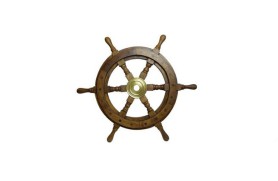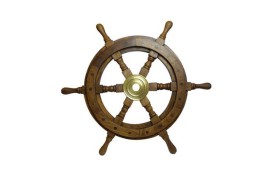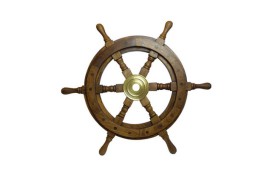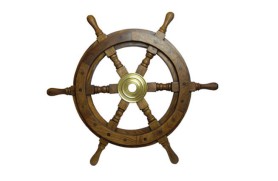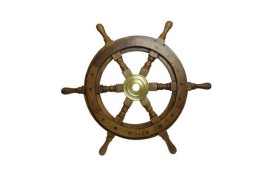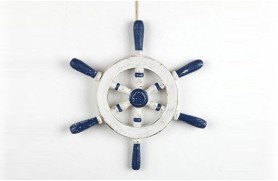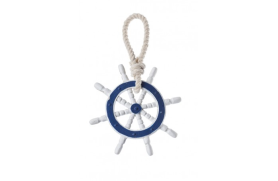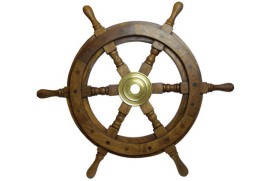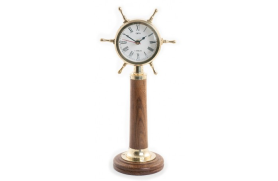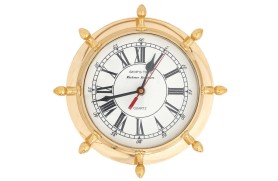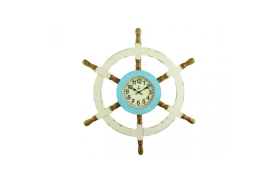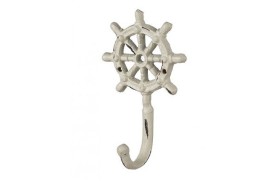
Decorative rudders: a maritime tradition and timeless beauty
In the world of nautical decor and nautical design elements, there are few things as iconic as decorative rudders. Not only do these ornate pieces have a long maritime history, but they remain a popular decorative element in many homes and businesses around the world today. In this text we want to delve deeper into the fascinating world of decorative rudders and explore their meaning and various uses.
The history of decorative rudders dates back to the early days of sailing. Originally, of course, they served to keep the ship on course. But people soon realized that these functional objects also had an aesthetic value. Steering oars became artistic works of art, especially in merchant shipping in the 18th and 19th centuries. They were lavishly decorated and decorated with carvings, inlays and often even golden elements. These ornate helms were often seen as status symbols and considered a sign of wealth and good taste.
Today, decorative rudders have become a popular element in nautical decor. Not only do they radiate timeless beauty, they also evoke the romantic idea of sea voyages and high seas adventure. Whether in coastal homes, seaside restaurants or nautical themed rooms, decorative rudders can be found everywhere.
There are many different styles and designs of decorative rudders. Classic models are usually made of wood and feature delicate carvings. These may represent nautical symbols such as anchors, ships or shells and are often painted in different colours. Modern interpretations also like to use materials such as metal or plastic to achieve a minimalist or industrial look. Some rudders are authentic antique pieces, while others are mass-produced to be accessible to a wider audience.
The possible uses of decorative rudders are diverse. In living rooms they serve as attractive wall decoration and give every room a nautical touch. They can also be placed in bathrooms or bedrooms to create a relaxed, nautical atmosphere. In commercial spaces such as restaurants, bars and hotels, decorative rudders often draw attention and help create a welcoming and themed atmosphere.
Another advantage of decorative rudders is their versatility. They can be easily combined with other nautical decorative elements such as sailor's knots, fishing nets, shells and boat lanterns. In this way, a harmonious and well-thought-out nautical design can be created.
In short, decorative rudders are not only maritime symbols, but also timeless works of art that have found a permanent place in the world of interior design and decoration. Their history, diversity and versatile uses make them a fascinating and popular decorative element that reflects a love of sailing and the beauty of the sea. Whether hanging in an old fisherman's house on the coast or in a modern apartment in the city, decorative rudders are a real statement and give any room a unique and maritime touch.
 Cookie preferences
Cookie preferences


